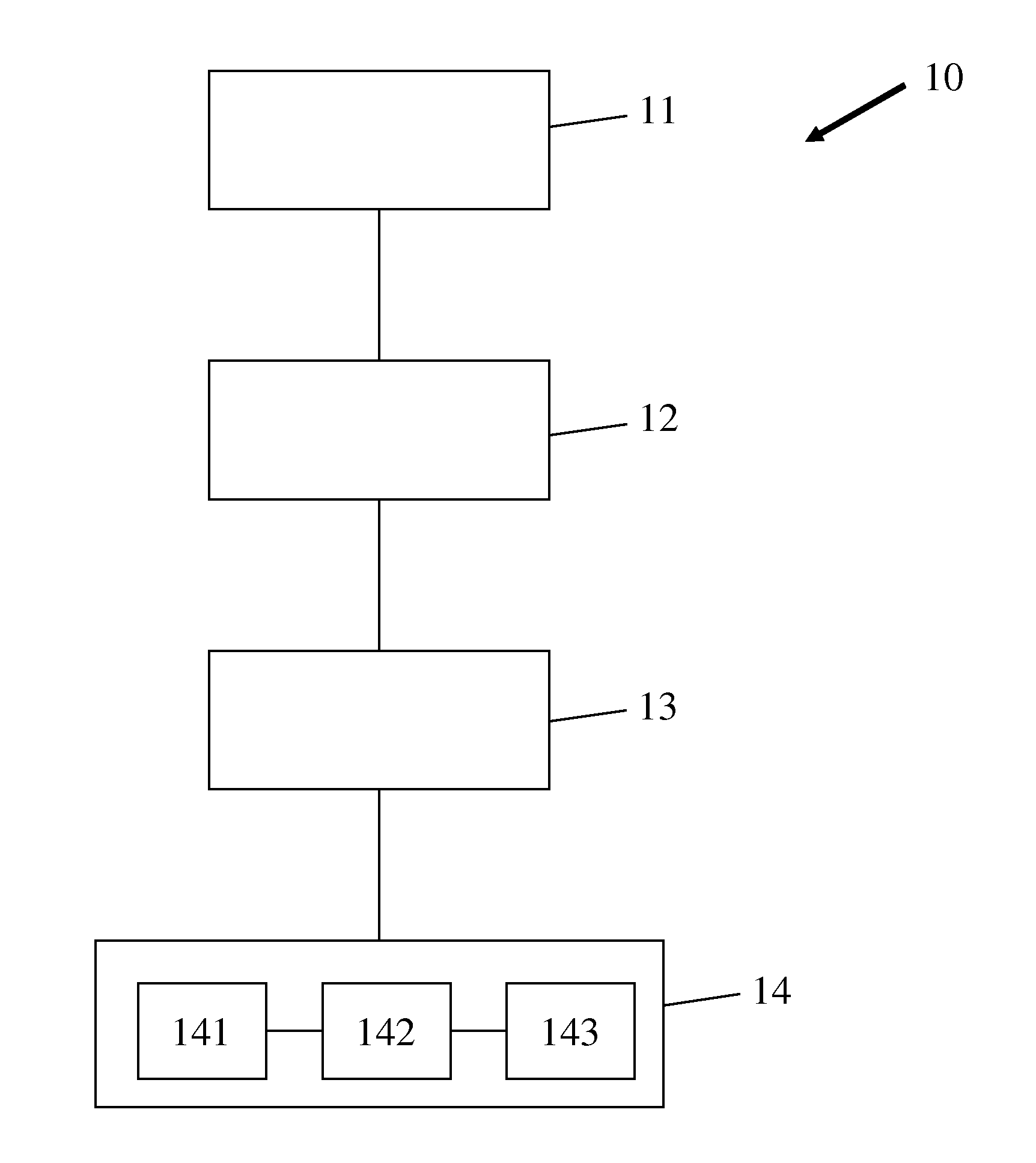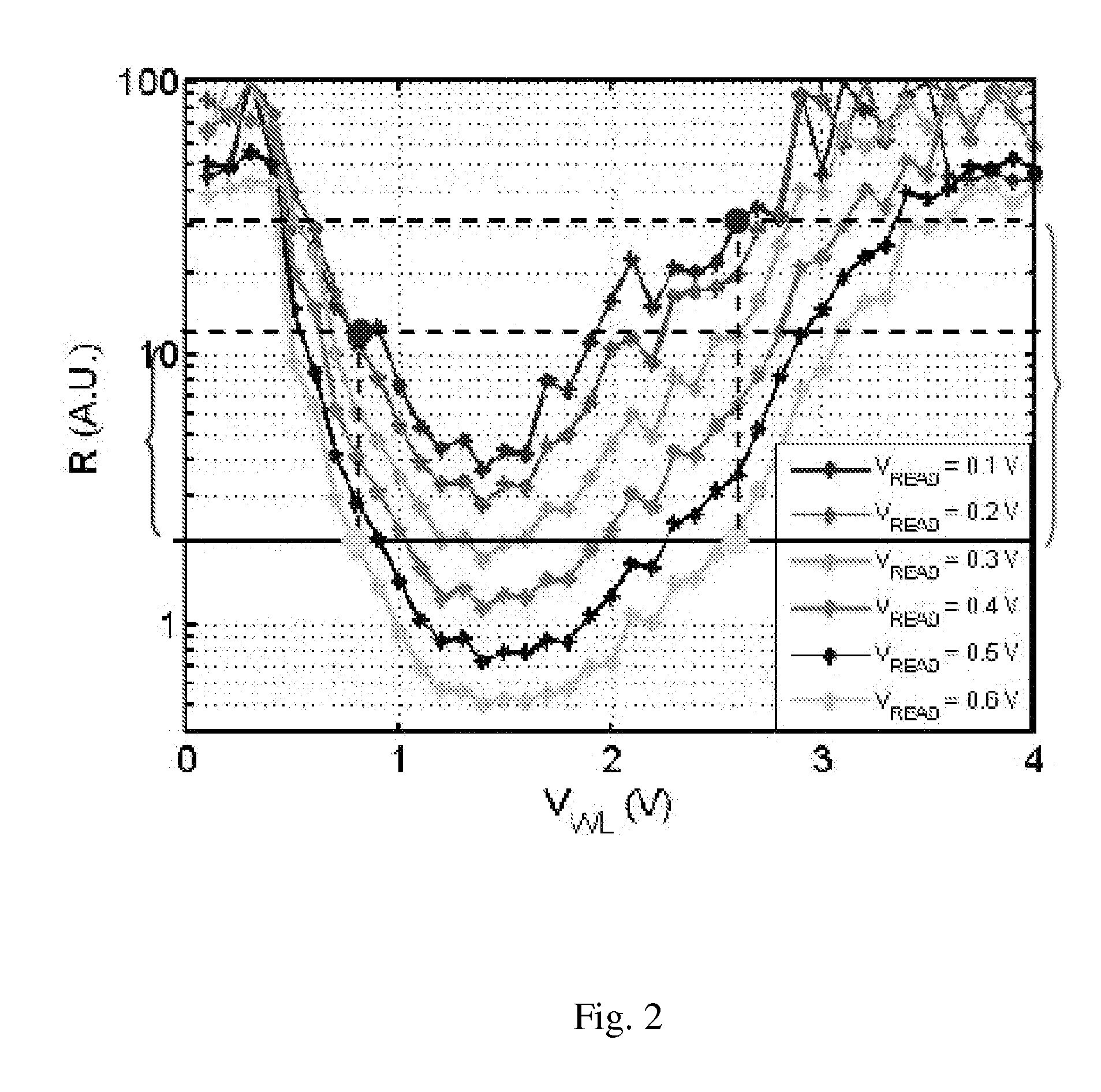Programming at Least One Multi-Level Phase Change Memory Cell
- Summary
- Abstract
- Description
- Claims
- Application Information
AI Technical Summary
Benefits of technology
Problems solved by technology
Method used
Image
Examples
Embodiment Construction
[0073]The present invention may be applied to multi-level Phase Change Memory (PCM) cells. Multi-level functionality, i.e. multiple bits per PCM cell, is a prominent way to increase the capacity and thereby to reduce costs. A multi-level PCM cell is based on storing multiple resistance levels between a lowest (SET) and a highest (RESET) resistance value. The multiple levels or multiple resistance levels of the PCM cell correspond to partial-amorphous (partial-RESET) and partial-crystalline (partial-SET) phase distributions. The phase change, i.e. the state programming, may be enabled by Joule heating, in particular by temperature or current control, and may be initiated electrically, in particular by a threshold switching.
[0074]In FIG. 1, an exemplary diagram of a wordline-based programming curve 100 of a PCM cell is shown. The x-axis of FIG. 1 shows the wordline voltage VWL, and the y-axis shows the resistance value of the PCM cell read by a reading pulse VREAD=0.3 V.
[0075]The prog...
PUM
 Login to View More
Login to View More Abstract
Description
Claims
Application Information
 Login to View More
Login to View More - R&D
- Intellectual Property
- Life Sciences
- Materials
- Tech Scout
- Unparalleled Data Quality
- Higher Quality Content
- 60% Fewer Hallucinations
Browse by: Latest US Patents, China's latest patents, Technical Efficacy Thesaurus, Application Domain, Technology Topic, Popular Technical Reports.
© 2025 PatSnap. All rights reserved.Legal|Privacy policy|Modern Slavery Act Transparency Statement|Sitemap|About US| Contact US: help@patsnap.com



